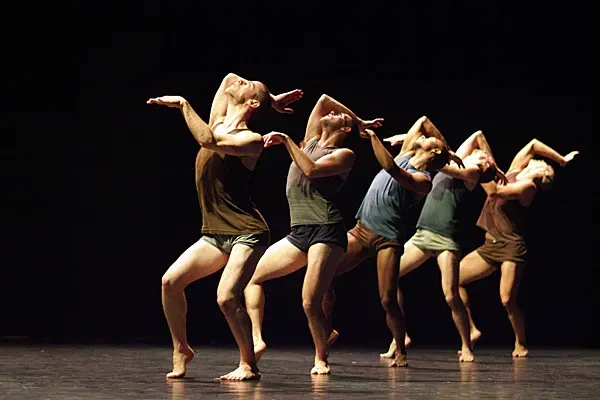NZ Fest Digest: Dancers Go Gaga
Written by

The audience arriving at St James Theatre for Saturday’s performance of Deca Dance confronted a scene of protestors chanting “Shame!” These protesters were advocates for a two-state solution in Israel, the country in which Batsheva dance company is based.
The audience arriving at St James Theatre for Saturday’s performance of Deca Dance confronted a scene of protestors chanting “Shame!” These protesters were advocates for a two-state solution in Israel, the country in which Batsheva dance company is based. Batsheva receive government funding, and protesters believe that Wellington should not support performances funded by a government intent on whitewashing its country's international image. World renowned contemporary choreographer Ohad Naharin seems to see his choreography as an essentially harmless and unifying practice, and denies intentionally politicising his works. I attended the performance the night prior to the protests, unaware of the controversy.
In the show, the curtain lifts to dancers on a crescent of seats in corporate suits. From sitting they are stirred into a powerfully percussive frenzy, periodically erupting into a standing, full-chested Jewish folkloric chant in concert preceded by Mexican waves of such force the final sitter is propelled from his chair face-first to the floor. The crescendo sees the dancers jettison their jackets, shoes and suits to a pile mid-stage until they stand 15 abreast in singlets and baby-blue briefs. The last sitter is again singled out as the only one still suit-clad, and now he appears vulnerable among this riled crowd, newly shed of their shackles.
This rousing rhythmic performance is followed by an eroticized though rather dispassionate duet to Vivaldi, which we are snapped out of with anxiety-inducing high speed electronica. A herd of androgynous suits emerge poker-faced in wide-brim Jewish fedoras. Unnervingly they descend the stage to surround and peruse the audience, each handpicking a victim for an unknown act to follow. The chosen women mount the stage and a musical switch to perky Dean Martin invites them to partner dance with the pros. Despite the hooting applause, for me this was community hall cringe.
The trailer, publicity and consistently rave reviews had promised a diverse, dynamic outpour of dance. Yet if the show was energetic, following its opening it was not ‘exhilarating’ or passionate as promised, but boyishly wild and listless. Perhaps because Naharin is intent on releasing the ‘inner child’ from his dancers: has developed his own dance vocabulary called ‘Gaga’ after babies’ talk. It seems to be a Feldenkreis-esque method of liberating dancers from conventional movement and physical constraints. Physically freeing and avant-garde perhaps, but to the untrained eye these often erratic and mechanical movements look a little creepy. I wonder if Deca not only refers to the decade of choreography from which the show draws, but also to the early counting of children, and to the 1 and 0 composites of communication in the digital age.
Soon after the dancers’ lady-props return to their seats comes a homoerotic exploration of survival, conformity and dissent. Five bare-chested men in white pantaloons palm tribal body paint out of a steel bucket down their heads to pelvis; they wrestle, splash, change pecking orders and take flight in running leaps. The female dancers’ collective marching, spasming and jogging on the spot is less vital. Once they cleverly form a giant, many armed metronome with ticking tongues. The many moving faces are wide-eyed and open-mouthed like the sinister wooden clowns at which balls are thrown at carnivals.
Whether conceptual cleverness or covert campaigning, the possessed women and lady-props, the creepy secret agents, primitivist and robot themes interspersed with prattling Gaga, innuendo and excited running jumps gave me the overall impression of Naharin’s work as boyish. During a scene where an electronic voice prompted dancers by counting between uno and deca, the number sexo was a cue to dry hump another dancer. The following group performance saw the men and women queue to strike a pose in turns, with the women all jumping for a mid-air moon. Perhaps it is precisely this boyishness that makes the critics too go Gaga.
In any case, both Festival artistic director Shelagh Magadza and Naharin have stated their views that the Saturday protesters who demanded that people boycott Deca are not achieving anything. Naharin says he agrees with their position on the need for an Israeli-Palestinian two-state solution, but he said protests against his show achieve nothing for the cause. No dance aficionado, I am similarly left wondering what it is Naharin is trying to achieve with his own work.